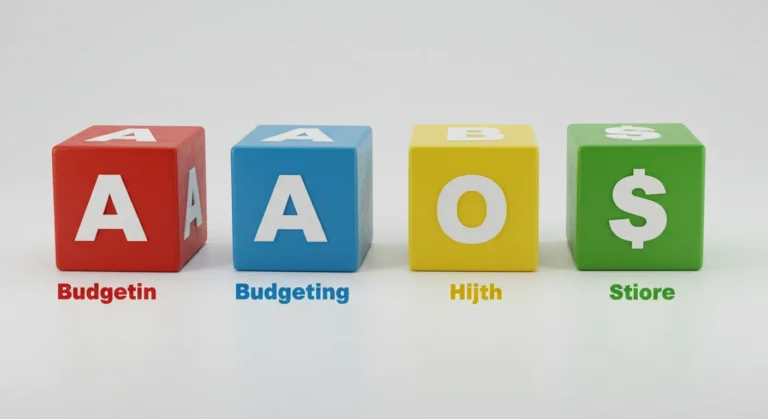What are the 4 A’s of budgeting? This intriguing question hints at a fundamental aspect of personal finance that can significantly impact how we manage our money. Understanding these four elements can transform the way you approach budgeting, giving you clarity and control over your financial future. As we dive into this subject, keep in mind that effective budgeting isn’t merely about crunching numbers; it’s also about aligning your financial reality with your goals and values. So, let’s unpack these four critical A’s and explore how they can empower you in your financial journey.
1. Awareness: Know Your Financial Landscape
Understanding Your Current Situation
The first A in budgeting is awareness. Before you can make any changes, you need a clear picture of where you stand financially. This involves taking stock of your income, expenses, debts, and savings. I often recommend creating a simple spreadsheet or using budgeting apps to categorize your spending. You’ll be surprised at how revealing this process can be; it’s like receiving a financial x-ray!
Identifying Needs vs. Wants
Once you’ve mapped your current state, the next step is to differentiate between your needs and wants. Needs are essentials such as housing, food, and transportation, while wants encompass the luxuries and conveniences. By identifying these, you can prioritize your spending and allocate funds more effectively, ensuring you’re not sacrificing essentials for fleeting pleasures.
2. Allocation: Distributing Your Funds Wisely
Creating a Budget Plan
With a solid awareness of your financial situation, the next A is allocation. This is where you strategically distribute your income towards different categories. I suggest following the 50/30/20 rule: allocate 50% of your income to needs, 30% to wants, and 20% to savings or debt repayment. This simple yet effective method can make budgeting feel less like a chore and more like a framework for financial freedom.
Adjusting Allocations as Needed
Your budget is not set in stone; it’s a living document. Factors such as changes in income or unexpected expenses may require you to revisit your allocations. For example, if you land a bonus at work, consider how you can allocate a portion of it to savings or perhaps to a long-desired vacation. Be flexible and adaptable; your financial journey is unique and may require occasional course corrections.
3. Assessment: Reviewing and Analyzing Results
The Importance of Regular Check-ins
Now that you’re aware of your finances and have allocated your funds, it’s time for assessment. This step involves reviewing your budget regularly—weekly or monthly—to see how well you’re sticking to your plan. I remember a colleague who set a recurring reminder on her phone for monthly check-ins. This small habit kept her accountable and motivated!
Analyzing Spending Patterns
During your assessment, take a closer look at your spending patterns. Are there areas where you consistently overspend? Are those impulsive purchases affecting your savings goals? By analyzing these trends, you can make informed decisions for future months, ensuring you steer clear of any potential pitfalls.
4. Adaptation: Evolving With Your Financial Goals
Adjusting to Change
No budget can last forever as circumstances evolve. The final A of budgeting—adaptation—requires you to be open to change. Maybe you’re starting a family, changing jobs, or saving for a major purchase. Life events necessitate that you reassess your financial priorities continually. Understanding that adaptation is part of the budgeting process makes managing your finances less daunting and more fluid.
Setting New Goals
As your circumstances change, so too should your financial goals. If you find you’ve been successfully saving for a trip, you might want to adapt by setting new objectives, like investing for retirement or building an emergency fund. I encourage you to write down your financial goals—it’s a powerful way to visualize what you’re working towards and keep your motivation alive.
Putting It All Together: The 4 A’s in Action
Having explored the 4 A’s of budgeting, it’s clear that each element plays a crucial role in establishing a healthy financial life. Awareness sets the foundation, allocation distributes your resources, assessment keeps you on track, and adaptation allows you to pivot as necessary. By embracing these principles, you can transform your relationship with money, ensuring you’re not just surviving but thriving.
Think of budgeting not as a restriction, but as a pathway to financial empowerment. With the 4 A’s guiding your decisions, you’re not only creating a budget but cultivating a lifestyle where you feel in control and confident in your financial choices. So, whether you’re just starting your budgeting journey or looking for ways to improve your existing system, remember these 4 A’s will always be there to guide you toward smarter financial habits.

Useful links
Conclusion
As we wrap up our journey through the 4 A’s of budgeting—Acknowledge, Allocate, Adjust, and Assess—it’s clear how vital they are in paving the way to a sound financial future. You see, budgeting isn’t just about numbers; it’s a reminder of our personal goals and values. By acknowledging our financial reality, we lay the groundwork for making informed, deliberate choices that reflect what we truly care about.
Allocating our resources wisely helps us prioritize our needs and desires, ensuring that we’re not just drifting through financial life. And the real magic happens when we make adjustments along the way, adapting to life’s inevitable changes. It’s okay to tweak our budget! Life is dynamic, and our financial plans should be, too. Isn’t it empowering to know that we hold the reins?
Finally, the assessment allows us to reflect on our budgeting journey—what worked, what didn’t, and what we can do better. It’s about growth and learning, making the budgeting process not just a chore, but an enlightening experience. So, let’s embrace the 4 A’s with open hearts and minds, making budgeting a joyful part of our lives rather than a burden.
Frequently Asked Questions
What does it mean to Acknowledge in budgeting?
Acknowledging in budgeting means coming to terms with your current financial situation. This involves taking a close look at your income, expenses, debts, and savings. By facing the numbers honestly, you can pinpoint areas that need improvement and begin to understand your financial capacity. For instance, if you discover hidden subscriptions eating away at your budget, this acknowledgment becomes a critical first step toward making better financial choices that align with your long-term goals.
How do I Allocate my budget effectively?
Allocating your budget involves distributing your income among various expense categories in a way that aligns with your priorities. Start by organizing your expenses into fixed and variable categories, and then decide how much to dedicate to each based on your goals. For example, if saving for a vacation is a priority for you, allocate a specific portion of your income to that goal. You can utilize budgeting tools or apps to visualize your spending patterns, making the allocation process more straightforward and efficient.
What does Adjusting a budget entail?
Adjusting a budget means revisiting and modifying it as necessary to reflect changes in your financial situation or life circumstances. Life can be unpredictable; perhaps you receive a pay raise, or your car needs unexpected repairs. Adjust your budget to either increase your savings or accommodate new expenses. This fluidity is crucial, as sticking rigidly to a budget can lead to frustration and potentially undermine your financial goals. Embracing adjustments helps keep your budget relevant and aligned with your evolving life.
Why is Assessing a budget important?
Assessing your budget is all about reflective evaluation. Regularly reviewing your budget allows you to see where you stand financially and how well you’re meeting your goals. It helps identify spending patterns, highlights areas for improvement, and celebrates your successes. For example, if you notice you consistently underspend in certain areas, you might redirect those funds toward debt repayment or investment. This assessment is crucial for financial growth and ensuring that your financial practices serve your overall life vision.
Can the 4 A’s of budgeting help with financial stress?
Absolutely! The 4 A’s of budgeting—Acknowledge, Allocate, Adjust, and Assess—provide a structured approach that can significantly reduce financial stress. By acknowledging your financial state, you take control rather than letting anxiety dictate your decisions. Effective allocation allows you to prioritize what’s essential, while regular adjustments ensure your budget remains practical. Finally, consistent assessment helps you celebrate small wins and stay motivated. This proactive approach empowers you to tackle financial challenges confidently, transforming stress into a sense of security.
How often should I review my budget?
It’s ideal to review your budget at least monthly, especially when you’re starting. Regular check-ins help you understand your spending habits, adjust for any life changes, and recalibrate your goals. However, if significant changes occur—like a new job, moving, or a shift in expenses—consider a review sooner. Treat your budgeting process as an ongoing dialogue with your finances, and you’ll foster a better relationship with your money over time. Consistency is key to long-term financial health!
Are there tools or apps to help with budgeting?
Yes, there are numerous budgeting tools and apps available to meet a variety of needs and preferences. Popular choices include Mint, You Need a Budget (YNAB), and EveryDollar. These platforms can help you track spending, set financial goals, and create a structured budget that works for you. Many offer visual components that can make managing your finances feel less daunting. Experiment with a few options to find the one that suits your style, and make budgeting an engaging part of your daily routine.


